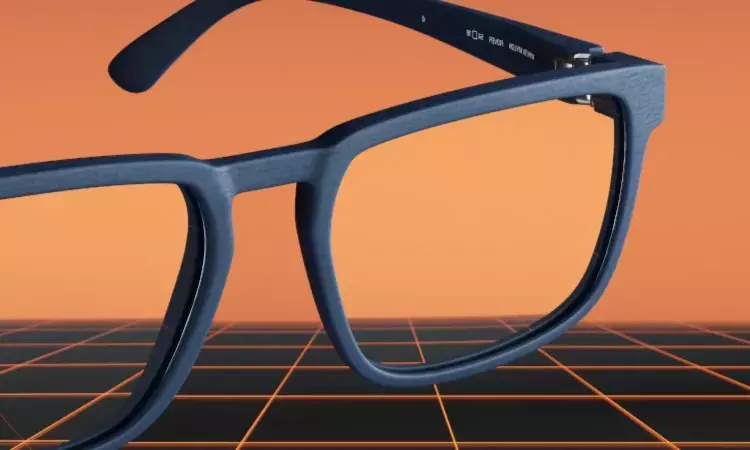- Home
- Medical news & Guidelines
- Anesthesiology
- Cardiology and CTVS
- Critical Care
- Dentistry
- Dermatology
- Diabetes and Endocrinology
- ENT
- Gastroenterology
- Medicine
- Nephrology
- Neurology
- Obstretics-Gynaecology
- Oncology
- Ophthalmology
- Orthopaedics
- Pediatrics-Neonatology
- Psychiatry
- Pulmonology
- Radiology
- Surgery
- Urology
- Laboratory Medicine
- Diet
- Nursing
- Paramedical
- Physiotherapy
- Health news
- Fact Check
- Bone Health Fact Check
- Brain Health Fact Check
- Cancer Related Fact Check
- Child Care Fact Check
- Dental and oral health fact check
- Diabetes and metabolic health fact check
- Diet and Nutrition Fact Check
- Eye and ENT Care Fact Check
- Fitness fact check
- Gut health fact check
- Heart health fact check
- Kidney health fact check
- Medical education fact check
- Men's health fact check
- Respiratory fact check
- Skin and hair care fact check
- Vaccine and Immunization fact check
- Women's health fact check
- AYUSH
- State News
- Andaman and Nicobar Islands
- Andhra Pradesh
- Arunachal Pradesh
- Assam
- Bihar
- Chandigarh
- Chattisgarh
- Dadra and Nagar Haveli
- Daman and Diu
- Delhi
- Goa
- Gujarat
- Haryana
- Himachal Pradesh
- Jammu & Kashmir
- Jharkhand
- Karnataka
- Kerala
- Ladakh
- Lakshadweep
- Madhya Pradesh
- Maharashtra
- Manipur
- Meghalaya
- Mizoram
- Nagaland
- Odisha
- Puducherry
- Punjab
- Rajasthan
- Sikkim
- Tamil Nadu
- Telangana
- Tripura
- Uttar Pradesh
- Uttrakhand
- West Bengal
- Medical Education
- Industry
Smartphone 3D surface imaging helps create customised eyeglasses for kids with craniofacial anomalies: JAMA

San Francisco: Custom frames produced through smartphone-enabled 3D surface imaging (3DSI) combined with 3D printing technology may potentially enable long-term visual outcomes for pediatric patients having trouble with glasses to fit and adherence which is at risk of vision loss due to amblyopia, a recent study in JAMA Ophthalmology has shown.
For pediatric patients with congenital and acquired craniofacial abnormalities, finding an appropriate fit in glasses is difficult; consequently, these children are at a high risk of vision loss secondary to refractive amblyopia, as often they have poor adherence to regular glasses wearing. Custom 3-dimensional (3D)–printed glasses may have better design and fit, but the availability of magnetic resonance imaging (MRI) and computed tomography limits accessibility.
Against the above background, Alejandra G. de Alba Campomanes, Department of Ophthalmology, University of California, San Francisco, and colleagues aimed to describe a method for using a commercially available smartphone 3DSI to capture facial anatomy as a basis for custom glasses design in a quality improvement study.
The researchers addressed the question, "Can comfortable glasses be provided to children with congenital and acquired craniofacial abnormalities at vision loss risk due to amblyopia?
For this purpose, the researchers examined data from a case series in a primary academic center with numerous referral centers throughout the US. The evaluation included reported fit descriptions from pediatric patients with poor glasses adherence due to craniofacial abnormalities.
The researchers compared key anatomic parameters for glasses fit (distance from ear bridge to nasal bridge, face width, length from lateral to medial canthus, distance from pupil's center to center of nasal bridge, nasal bridge width, and vertical ear offset) between scans. If the difference in measurements was less than 5% between MRI and 3DSI, and if the key parameters could be determined, a 3DSI scan was considered successful. A second outcome measure was the fit of glasses designed by the e 3DSI method as described by the patient, parent, or guardian.
The study demonstrated the following findings:
- Measurements of critical parameters for glasses fit were comparable across MRI and 3DSI scans (mean difference of 1.47 mm between parameters).
- Among 20 patients aged 1 to 17 years with craniofacial abnormalities, all achieved a successful fit (reporting daily glasses adherence without irritation) as judged by the patient, parent, or guardian.
- A mean of 1.7 revisions was made from the initial prototype to the final frame production using 3DSI technology.
"The results showed that smartphone-enabled 3DSI combined with 3D printing technology can produce custom frames with a successful fit for patients having craniofacial anomalies," researchers wrote in their conclusion. "This accessible and well-tolerated imaging process may have implications for adherence with glasses wearing in patients at risk of vision loss due to amblyopia."
Reference:
de Alba Campomanes AG, Meer E, Clarke M, Brodie FL. Using a Smartphone 3-Dimensional Surface Imaging Technique to Manufacture Custom 3-Dimensional–Printed Eyeglasses. JAMA Ophthalmol. 2022;140(10):966–973. doi:10.1001/jamaophthalmol.2022.3312
Dr Kamal Kant Kohli-MBBS, DTCD- a chest specialist with more than 30 years of practice and a flair for writing clinical articles, Dr Kamal Kant Kohli joined Medical Dialogues as a Chief Editor of Medical News. Besides writing articles, as an editor, he proofreads and verifies all the medical content published on Medical Dialogues including those coming from journals, studies,medical conferences,guidelines etc. Email: drkohli@medicaldialogues.in. Contact no. 011-43720751


